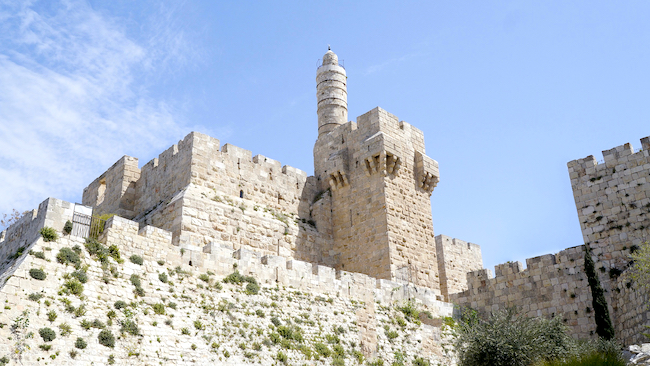
Yechezkel 43:10
This week’s haftorah shares with us an important perspective regarding ourlong dark exile and the brilliant light awaiting us at the end of it. Thehaftorah begins in the midst of an elaborate prophetic vision that theprophet Yechezkel was privileged to view. In the previous three chaptersHashem showed the prophet the detailed blueprints of the future and finalmagnificent Bais Hamikdash. In our haftorah Hashem instructed Yechezkel to share his vision with the Jewish people. Hashem said, “Tell the House of Israel the vision of the Bais Hamikdash in order that they should beembarrassed from their sins when they measure the completed structure.”(43:10) Yechezkel was commanded to remind the Jewish people about theirwrongdoings which ultimately led to the destruction of the previous BaisHamikdash. They were presently in the midst of the Babylonian exile andthe sight of the Bais Hamikdash was intended to remind them of all theirprevious faults. They could easily realize that the Bais Hamikdash wouldhave been theirs if not for their previous sinful ways.
Hashem continued, “And if they are embarrassed for all of their wrongdoings then show them the form of the Bais Hamikdash, its specific rooms, entrances and exits …. and write this before them and they should retain its entire image and all its specifications and they will construct them.”The Radak explains that the prophet Yechezkel was given specificinstructions to reveal these detailed plans only after the Jewish peoplesensed embarrassment. Only after regretting their sinful ways which caused the destruction the first Temple would the Jews be privileged to observe the vision of the third Bais Hamikdash. Apparently the reason for this was because this edifice would be an everlasting one and could only be constructed after the world was free of sin. Therefore, even beholding the sight of the third Bais Hamikdash required special merit and only those who had forsaken their sinful ways could be privileged to view it.
But in truth, the timing of this prophecy requires serious reflection. The Scriptures reveals earlier (see 40:1) that this prophecy came to Yechezkel fourteen years into the Babylonian exile long before the second Temple was even in sight. It is therefore quite shocking for us to discover here a prophecy about the third Bais Hamikdash, rather than the second. The wounds of the first Temple’s destruction were not healed and Hashem was already revealing the plans for the third Temple. Wouldn’t it have been more timely and appropriate to share with the Jewish people visions of the second Temple rather than the third?!
The lesson which can be gleaned from this is a striking perspective aboutHashem’s mercy and kindness. Radak explains the above passages in thefollowing manner. The Jewish people were being presented a challenge andat the same time an extraordinary opportunity. Hashem revealed to themthat they could be granted the personal privilege of erecting the third and final Bais Hamikdash. If they repented and contemplated their finalredemption they could be ultimately involved in every one of its aspects.Although the Jewish people were presently in exile they were shown then aglimpse of the perfect world, the one after the revival of the deceased.They were informed that it was within their ability to merit their personal return in that final era and to actually be personally involved in the construction of the third Bais Hamikdash.
Yechezkel told them to focus on every detail of the future Bais Hamikdashand commit it to memory. If they believed in and aspired to being presentduring that glorious era they would merit it. And if they concentrated now on the details of the construction of the Bais Hamikdash and theirparticipation therein they would actually merit it then. The Radak quotes as his source, the famous principle of Chazal, “Whoever believes in the advent of Mashiach will merit the redemption.” Radak explains that in this same vein Hashem gave the Jewish people, then in exile, the opportunity of constructing the third Bais Hamikdash. They were informed that if they believed in it and in their participation therein they would merit it.
With the above in mind we now understand and appreciate the timely messageof Hashem regarding redemption. This special revelation at its particularmoment was intended to be an unbelievable comforting thought to the Jewishpeople. At that time they viewed themselves as rejected by Hashem andcouldn’t envision a glorious era awaiting themselves. They felt lost inexile and had forfeited their cherished relationship with Hashem. Suddenly during their moments of despair Hashem revealed to them His boundless love. Hashem showed them that during those very same moments, He was focusing on their most glorious era, the era of Mashiach. He reminded them not to despair because their trying predicament was but a fleeting moment on the horizon of eternity. Hashem therefore showed them a glimpse of eternity and their personal involvement in it. He invited them to rise above their present predicament and focus on their bright future. If they could display sincere faith in Hashem they would, in fact, rebuild the final Bais Hamikdash.
Hashem’s love for the Jewish people is eternal and even during our mosttrying times Hashem is focusing on this eternity. The Jewish people were therefore given here the fullest opportunity to repent. If they couldregret their past and forsake their sinful ways eternity would be theirs.Now in the midst of their exile they could actually prepare for theconstruction of the final Bais Hamikdash and establish themselves as thebuilders of eternity. Hashem’s love transcends all borders, time included, and is always focused on the eternal redemption of His people. We should learn from this never to despair and to realize that there is always a glorious moment awaiting us soon.


